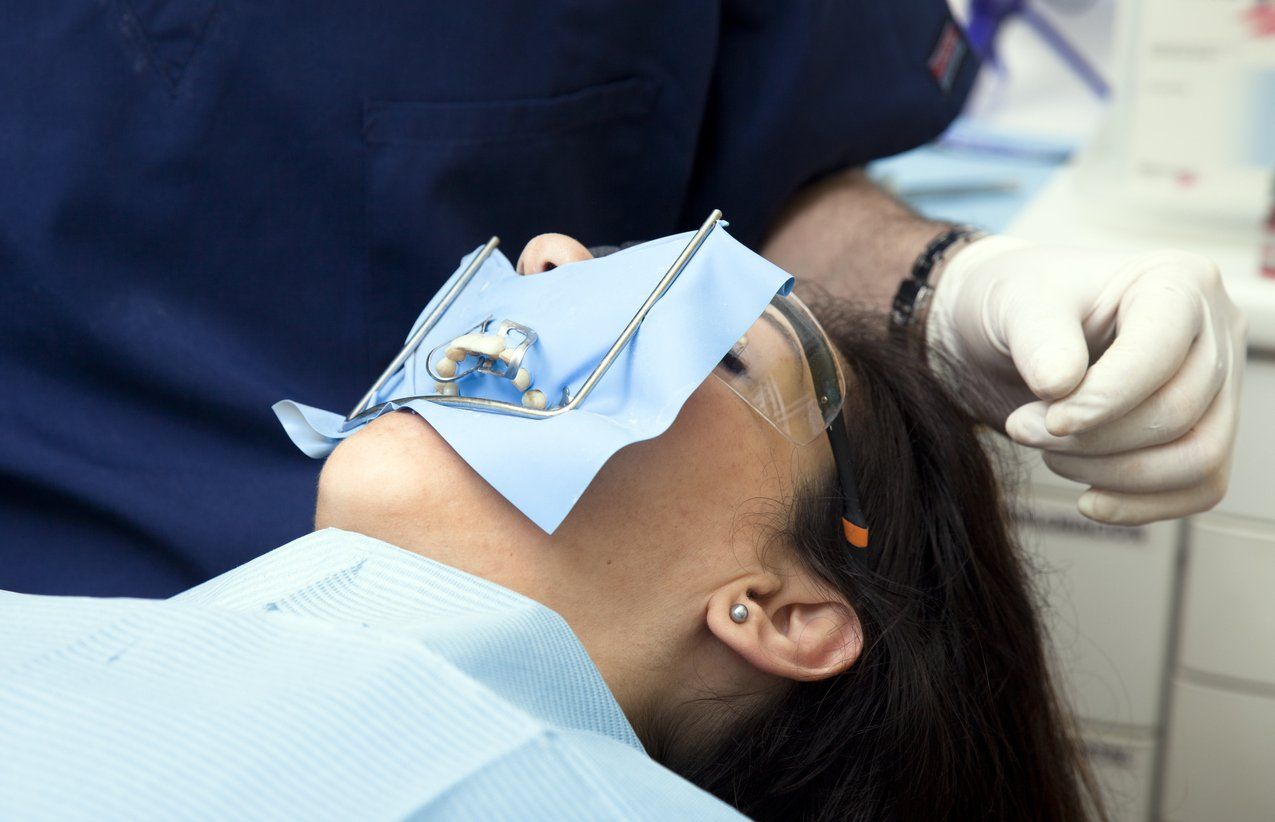Strengthen and Beautify Your Teeth with Dental Crowns and Bridges
When your teeth's appearance and function are fading, it's time to turn to your dental team. Your dentist can use dental crowns and bridges to restore and protect your teeth, as well as leave you with a beautiful, brilliant smile. But what are crowns and bridges? Below you will find everything you need to know about dental crowns and bridges, from their purpose and function to procedure details and cost, to help you understand how we can help you smile more confidently!
Everything You Need to Know About Crowns and Bridges
When a tooth or multiple teeth are suffering from a variety of issues, artificial pieces of dental work can be used by your dentist to treat the problem. Crowns and bridges can be used to improve the appearance of your smile, provide better functionality to damaged teeth, and help avoid larger oral problems in the future. They can be used to cover or replace your current teeth.
What Are Crowns and Bridges?

Crowns are used in dentistry to restore a damaged tooth's appearance, strength, and function. They are artificial coverings or caps that are specially bonded to your existing teeth to protect the tooth from further damage. There are a variety of crown types and they can be made from materials such as porcelain, stainless steel, ceramic, and even gold.
Your dentist may use crowns to repair one or a few damaged teeth. Crowns are permanently affixed to your teeth after your dentist has treated and removed any damaged tissue within the tooth. They are designed to act as your natural tooth does, in function and appearance. A crown completely covers every visible surface of a damaged tooth.
Bridges are removable, partial dentures that are used to bridge a gap between one or more missing teeth. They are made using your natural teeth or crowns as anchoring teeth on either side of the gap, with artificial teeth replacing the missing ones. These bridges can typically be removed for comfort and cleaning. They are created using a variety of materials and can be found in a variety of shapes and sizes, depending on the number of missing teeth. Bridges can be used to replace teeth, maintain the shape of your mouth, and prolong the life of healthy teeth.
Why Are Crowns and Bridges Needed?
Your dentist may recommend the use of crowns or bridges to treat a variety of dental issues. They are commonly used to cap, cover, treat, and replace damaged or unhealthy teeth in a multitude of situations. Though crowns and bridges can be used to treat the same types of complications, crowns are typically used to treat a single tooth at a time, while bridges are used to replace multiple, damaged teeth at one time. You may need a crown or bridge procedure for any of the following situations:
- Cosmetic changes and modifications
- To protect and cap your tooth after a root canal
- Bridging a gap between missing teeth
- To cover or cap dental implants
- To fix and restore a broken, fractured, or chipped tooth
- Protecting teeth from future damage
- To cover or cap large fillings, cavities, significant decay, and more
Getting Your Crown or Bridge: What to Expect

Before receiving any type of crown or bridge, you'll first need to be examined by your dentist. Your dentist will perform a routine exam and take images of your teeth to check for decay or any damage. If a crown or bridge is needed, your dentist will use these images and the information found in your exam to create a custom plan that optimizes the appearance and function of your teeth.
Keep in mind that you may require certain treatments before receiving your crown or bridge. For example, if you need a root canal or a tooth extracted, this will be done first. Your crown or bridge work can typically be completed in around 2-3 visits.
Here is what to expect when receiving a crown :
- You will be administered a local anesthetic to numb the affected area. Though stronger forms of anesthesia are not typically required, your dentist may be able to provide you with options to reduce any procedural anxiety.
- After you are completely numb, your dentist will begin filing down the damaged tooth. All decayed and damaged tissue and pulp are removed from the tooth in order to give the crown a clean and healthy surface to attach to. If your dentist must remove large portions of tissue, you may require a special material that is used to build your tooth up for added strength and durability.
- When your tooth is done being prepared, your dentist will make impressions of your mouth and teeth. These impressions are then used to create a permanent crown that is custom-made to fit your smile.
- Your dentist will then place a type of temporary crown over your tooth to protect the work just performed, while you wait for your permanent crown.
- A few weeks later, your dentist will use a cement-like material to permanently bond the crown to your tooth.
Here is what to expect when receiving a bridge :
- You will be administered a local anesthetic to the affected area and your dentist will begin necessary reshaping for any crowns you may need. Your dentist will perform any necessary procedures to prepare your teeth for the bridge.
- Your dentist will make impressions of your teeth that are used to create your permanent bridge. While you wait for your bridge, your dentist will provide you with a temporary bridge.
- In a few weeks, you will return to receive your permanent bridge, which your dentist will adjust and modify for the perfect fit.
Recovery and Caring for Your Crown or Bridge
After any dental procedure, it is common and normal to feel mild achiness or discomfort for a few days. This is also true for most crown and bridge work, as you should be able to return to your normal activities the following day. While you wait for your permanent bridge or crown, it is important to take care when eating and drinking and always practice good oral hygiene habits. After receiving your permanent crown or bridge, you may resume normal activities immediately. With the proper care, your crown or bridge work could last for up to 15 years.
Financial Cost of Crowns and Bridges
With all dental treatments and procedures, there are many factors that are taken into consideration when discussing cost. These factors can include dental insurance coverage, materials and tests used during the procedure, the number of crowns or bridges you need, the treatment you may require before receiving crowns or bridges, and the severity of the procedure. With those considerations in mind, the average cost of a bridge can range between $700 and $1,500, while crowns can cost between $800 and $3,000.










